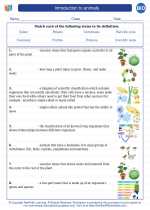Worms in Biology
Worms belong to the phylum Annelida and are classified as invertebrates. They can be found in various environments including freshwater, marine, and terrestrial habitats. Worms play important ecological roles in nutrient cycling and soil health. There are different types of worms, including earthworms, marine worms, and leeches, each with unique characteristics and ecological significance.
Anatomy of Worms
Worms typically have a long, cylindrical body with a well-defined head and tail region. They lack limbs and exoskeletons, and their bodies are often segmented. The segmentation allows for flexibility and movement. Worms also have a well-developed digestive system, nervous system, and reproductive system. Some species of worms have specialized structures for respiration and sensory perception.
Reproduction and Life Cycle
Worms exhibit various modes of reproduction including sexual and asexual reproduction. In sexual reproduction, worms produce eggs and sperm, which are fertilized externally. Some worms are hermaphroditic, possessing both male and female reproductive organs. Asexual reproduction can occur through fragmentation or budding in certain species of worms.
Economic and Ecological Importance
Worms contribute to soil health through their burrowing activities, which aerate the soil and improve drainage. They also facilitate the decomposition of organic matter, playing a crucial role in nutrient cycling. Earthworms, in particular, are considered beneficial for agriculture as they enhance soil fertility and structure.
Common Worm Species
- Earthworms (e.g., Lumbricus terrestris)
- Marine worms (e.g., Polychaeta)
- Leeches (e.g., Hirudinea)
Study Guide
To study the topic of worms effectively, consider the following key areas:
- Understanding the anatomical features of worms and their functional significance.
- Exploring the reproductive strategies and life cycles of different worm species.
- Analyzing the ecological roles of worms and their impact on the environment.
- Comparing and contrasting the characteristics of common worm species.
Additionally, practical activities such as observing live worms, conducting soil experiments, and examining worm anatomy can enhance understanding and appreciation of these fascinating organisms.
By thoroughly exploring these aspects, students can gain a comprehensive understanding of the biology of worms and their ecological significance.
.◂Biology Worksheets and Study Guides High School. Introduction to animals
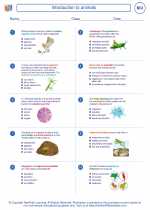
 Worksheet/Answer key
Worksheet/Answer key
 Worksheet/Answer key
Worksheet/Answer key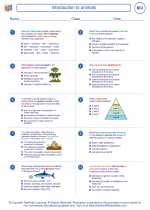
 Worksheet/Answer key
Worksheet/Answer key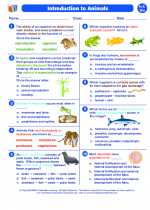
 Vocabulary/Answer key
Vocabulary/Answer key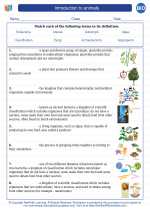
 Vocabulary/Answer key
Vocabulary/Answer key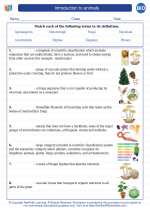
 Vocabulary/Answer key
Vocabulary/Answer key